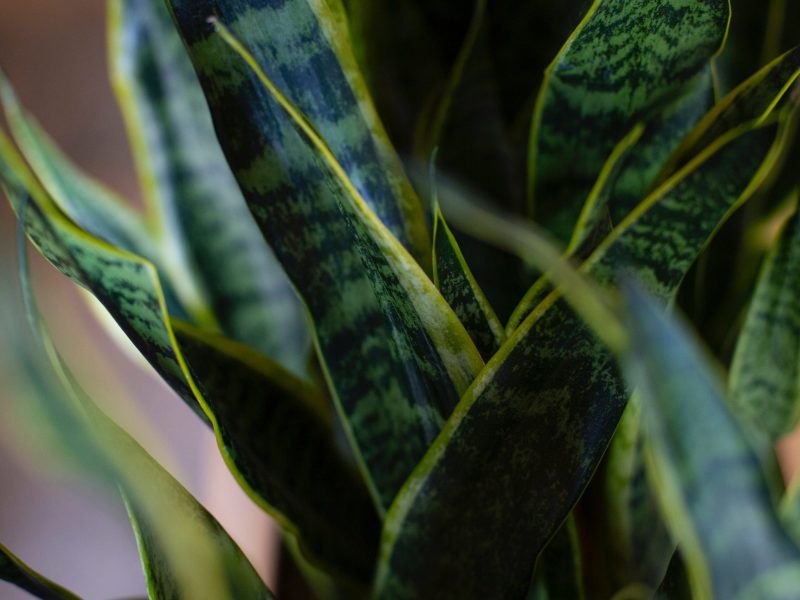
One of the most common issues Snake Plant parents have is mushy leaves. But there is one good thing about this problem though – there aren’t many causes of mushy Snake Plant leaves which makes finding and fixing the cause pretty simple. Below you will find the most common causes and what to do once you have identified the problem.
Overwatering is the leading cause of mushy leaves for Snake Plants
About 99% of the time, overwatering is the cause of mushy Snake Plant leaves. Sansevierias really don’t need much water at all meaning their soil can very quickly become waterlogged even if you are careful. This will cause the roots to rot and the leaves to become soft and mushy.
The first thing to do if you spot mushy leaves on your Snake Plant is check the amount of moisture in the soil immediately and see the health of the root system. If the soil is very moist then remove it from the plant’s roots and replace the potting mix entirely. It is a good idea to trim away the dead and mushy parts of the root system so your Snake Plant can begin to recover.
Using a moisture meter really helps to gauge this properly. If you don’t what to have to worry about overwatering again you can grab a self-watering pot like this one, we use these all the time to make sure our plants are getting what they need, even when we’re away from home!
Drainage Issues can also be the problem
Sometimes it may not be your watering schedule that is causing your Snake Plant’s leaves to go soft and mushy, but poor drainage of the soil and pot. You can very easily increase the amount of drainage and aeration in the pot by mixing in a small amount of perlite. This will make it far easier for water to flow through and out of the drainage holes of your pots (you should also check to make sure your pots have drainage holes). Another easy step is to add a few small stones or pebbles to the bottom of your pots, this helps in making sure that the drainage holes don’t get blocked by clumps of soil.
Although clay or terracotta pots can be a little bit more expensive or breakable, their upsides are much more than just the aesthetic. Your Snake Plant will most likely come in a cheap plastic pot as these are great for nurseries and plant shops but less good for your plant’s health. Terracotta plant pots are permeable which means that some of the water evaporates through the sides of the pot. This isn’t the case for the plastic pots which makes overwatering a lot easier to do.
Too much humidity around your Snake Plant
Aside from watering, humidity is the only other real factor that can cause your Snake Plant’s leaves to go mushy. Snake Plants thrive in average to low humidity levels and don’t need to be misted or anything like that. If the leaves are damp for long periods of time then this may cause them to rot and go mushy.
Make sure your Snake Plant isn’t sat next to a humidifier or isn’t being misted regularly. If you’re home is naturally quite humid then maybe invest in a dehumidifier or move your plant away from sources of high humidity such as the cooker or showers.
Should I remove the mushy leaves?
We always recommend removing leaves that are unhealthy or dying as this conserves energy and nutrients for the healthy parts of the plant. It means you Snake Plant won’t waste anything trying to keep these mushy leaves alive. Plus your plant will look much better if you trim away the soft leaves which is a bonus!
Complete Houseplant Care eBook
Our comprehensive (and rather good looking) eBook that will teach you everything you need to know to successfully care for, and maintain your houseplants!
Buy on













